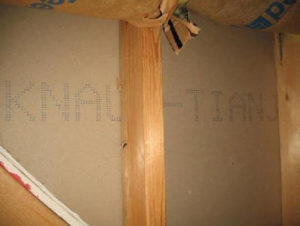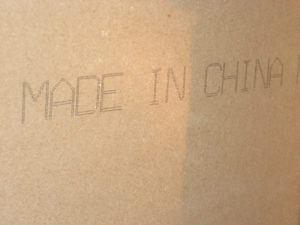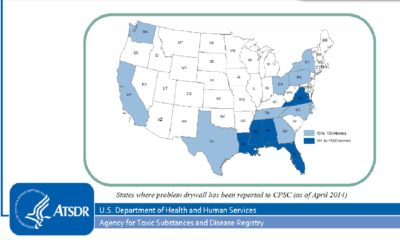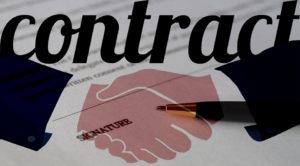 Important Notice About Chinese Drywall Problems
Important Notice About Chinese Drywall Problems
To All Buyers of Homes in Tradition, St Lucie West, and Port St Lucie: Buyers Be Aware of Defective Chinese Drywall in Homes Built During the Last Decade.
In the height of the construction boom and in the aftermath of the active hurricane seasons the shortage of drywall and other construction materials forced the developers to import them from China during the period of 2004 to 2006. Unfortunately, some of the imported Chinese drywall was manufactured with toxic materials and caused an adverse effect on the values of homes that were constructed with the Chinese drywall. Although the problems persisted throughout 2008, but there were reports of similar issues with some of the imported Chinese drywall in earlier years.
The Agency for Toxic Substances and Disease Registry, ATSDR along with the US Consumer Product Safety Agency and other similar centers started the investigation of the possible problem with the imported Chinese drywall in 2009. Eventually, the task of measuring the sulfur components that could have been released from problem Chinese drywall was referred to the Lawrence Berkeley National Laboratory, LBNL. The sulfur compounds from 30 Chinese drywall samples manufactured in 2005 and 2006 were compared to that of the drywall manufactured in North America in 2009.
Consequently, the ATSDR employed the help of Georgia Institute of Technology, Georgia Tech, to make an estimation of the sulfur compounds concentration in homes built by the drywall based on the test results obtained from of LBNL.
Health Ramifications of the Chinese Drywall
Finally, by the tests were completed by LBNL and Georgia tech the concern for the health ramifications of the Chinese drywall samples were examined. The results were simply stated as “Test chamber used by the Lawrence Berkeley National Laboratory to measure emissions from drywall samples”. For more information please refer to the complete reports by ATSDR.
The tests also revealed that the level of the sulfur compound emissions was consistent with the problem of the metal corrosion in homes with the Chinese drywall. They also estimated that the level of the sulfur components emissions was much higher in the early days of manufacturing. It is noteworthy to mention that the drywall samples that were manufactured in North America in 2009 did not show any unusual levels of sulfur emissions as the imported Chinese drywall did. The final section of the report indicates the health risks of the exposure to sulfur components and the Chinese drywall as:
- Headache
- Fatigue
- Irritations if nose, throat, and eyes, and
- Asthma-like respiratory problems
People who were exposed to sulfur compounds emitted by some drywall manufactured in China may have experienced health effects and buyers of the new homes that were built during that period must do their due diligence before they buy. Currently, the only remedy in the place is to completely strip down the drywall within the entire home, decontaminate and re-drywall. Another side effect of the Chinese drywall that needs to be replaced is the signs of the premature corrosion in some metal parts in the homes including the gas lines and some electrical components. This is due to the emission of an unusual level of sulfurous compounds from the problems with Chinese drywall. In order to completely control the damage caused by the Chinese drywall all gas lines and, parts, as well as the electrical switch boxes, ground wires, and A/C coils should be replaced. So far, there is no indication that the Chinese drywall problems have extended into the wiring in the buildings.
This emission of sulfur compounds from the Chinese drywall has become a serious matter with serious health and financial consequences. To differentiate the homes that are affected by the Chinese drywall from the rest, all buyers need the assistance of the professionals in the field and no buyers should be depending solely on the words of the sellers alone. Buyers and their agents should be diligent about the problematic Chinese drywall and try to call for Chinese drywall inspection when purchasing a home that was built from 2001 to 2008 in the area.
When buying homes in Port St Lucie, St Lucie West, and Tradition please use local Realtors and other real estate professionals with working experience in the area. For more information about the availability of the new and resale homes along with information on the Chinese drywall and locating dependable Drywall Inspectors please contact:
Email: info@portstlucie.city
Phone: (772) 323-6730
 Florida Condo and HOA Anti-Kickback Policy
Florida Condo and HOA Anti-Kickback Policy

 Commercial Real Estate August 2012
Commercial Real Estate August 2012
 Important Notice About Chinese Drywall Problems
Important Notice About Chinese Drywall Problems
 Detecting Chinese Drywall Problem
Detecting Chinese Drywall Problem

 Placing an Offer to Purchase a Home
Placing an Offer to Purchase a Home Finding the Best Homes for Sale
Finding the Best Homes for Sale